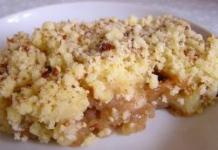✓ Growing physalis seedlings
✓ Planting in open ground
✓ Physalis - care
✓ Varieties:
✓ Features of growing physalis.
✓ Selection and preparation of a site for planting.
✓ Preparing seeds for planting
✓ Growing physalis seedlings.
✓ Recommendations and tips for protecting physalis from diseases and pests
✓ Diseases of phyasis
✓ Physalis pests
✓ Harvesting and storage of crops.
✓ Use of physalis in cooking
How to grow physalis
What kind of vegetable is this - its features and properties
Basic rules of care and reproduction
The genus Physalis has more than a hundred species. Only three of them are common in our country: strawberry physalis (Physalis pubescens), vegetable physalis, or sticky-fruited physalis (Physalis philadelphica), and ordinary, ornamental, or garden physalis (Physalis alkekengi). Although the latter is inedible, its enlarged calyx looks spectacular in autumn in vases, when the cap turns red. The fruit is poisonous because it is saturated with solanine.
Brief information:
Growing physalis seedlings
Physalis is grown through seedlings. Its seeds are small. They are sown in March, first in cassettes, later diving in the phase of 3-5 leaves into peat pots. In this way, ungerminated and weak plants are discarded, which often happens in crops with small seeds. To prevent the seedlings from stretching, the room should not be too hot. Optimum temperature + 18-20°C. After picking, the seedlings are fed with complex fertilizer for vegetable plants.
Planting in open ground
Water the plants 2-3 times a week, so that the soil is thoroughly wet. In April, when warm weather sets in, the growing seedlings can be taken out into the fresh air (during the day) for hardening. In early - mid-May it can be planted under film covers. The age of seedlings for planting in the ground is from 40-55 days. Elongated plants are planted at an angle. Since nightshades do not like high humidity, they try to ensure that the top layer of soil under the film is not too waterlogged.
Physalis - care
Grown plants are fed with complex fertilizer for vegetable plants. To improve fruiting, you can apply foliar feeding. To increase the number of fruits, the growing point of the plants is pinched at the end of June. Unlike tomatoes, physalis does not need to be planted. If the plants have a lot of fruits, the stems are tied up.
The fruits are collected as they ripen, before the first frost. They may fall off, but this does not affect the quality - fallen fruits can also be collected from the ground. Those that have not had time to ripen must be collected before frost. They will ripen in a warm room. You can dig up the plants before the onset of cold weather and hang them by the roots in the barn so that the remaining fruits gradually ripen.
Physalis fruits are hidden in yellow-green or orange sheaths. The surface of the fruit, especially young ones, is sticky and oily. The most delicious are those that ripen on the plant in the summer, in sunny weather. Late fruits are average in taste; it is better to make jam or pickle them.
Before use, physalis is freed from the dry sheath and washed with warm water to remove the sticky substance. If it is not washed off, the taste will be bitter. Fresh fruits are stored in a dry room at a temperature of +2-4 °C. without losing quality, 3-4 months, but they do not wash them before using them for food.
The aromatic fruits of strawberry physalis can be dried in the oven at a temperature of +40-50 °C. ventilate the oven periodically. They will not dry in the air - they will quickly deteriorate. The dried fruits resemble dried apricots. In folk medicine, physalis fruits are used as a diuretic for kidney and bladder stones. Decoctions and infusions of fresh and dry fruits - for inflammation of the respiratory tract, stomach, and intestines.
New varieties of physalis – Likhtarik, Zharinka (Ukrainian selection)

Details:
Origin of the vegetable
Physalis is an annual plant of the nightshade family, which got its name because of the rounded shape of the flower calyx (physa means bubble in Greek), inside which there is a fruit with numerous seeds.The genus Physalis is represented by 110 botanical species, most of which belong to wild weeds. Several types of physalis have decorative and nutritional value.
Useful properties and use. Ornamental types of physalis (common and garden) have small orange-red fruits that can be used as a diuretic, analgesic and hemostatic agent. The fruits of physalis are used as a harmless organic coloring for food products. Winter bouquets are made from branches with orange “lanterns”.
Vegetable Physalis
This species is more cold-resistant than the berry variety. It tolerates light frosts, so it can be planted in the ground 10-12 days earlier than tomatoes. In addition, it is more resistant to common nightshade diseases, including the most dangerous - late blight. Vegetable physalis is cross-pollinated. Like the decorative one, the caps bloom in the fall, turning bright red. There are varieties that are short (30-40 cm) and tall (up to 90-100 cm) with intermediate forms.
Strawberry physalis
These plants are more heat-loving and self-pollinating. Strawberry physalis, which is popularly called strawberry tomato and dwarf gooseberry, is shorter growing, with small berries. Fork is less productive and is much less widespread than vegetable, but its taste is more pleasant.
Physalis with edible fruits are divided into two groups. The first is of South American origin, Peruvian and strawberry, which have been known in culture for more than 200 years. The fruits of these varieties of physalis are very small and therefore are not widespread.
The second group of edible physalis includes vegetable species of Mexican origin. They are grown everywhere, including in Russia. They are more productive, less demanding on heat, and are distinguished by a variety of economically valuable traits. For this reason, we will dwell in more detail on physalis of Mexican origin.
In its homeland, vegetable physalis has long been cultivated under the names “tomatil” and “mil-tomato”, i.e. Mexican tomato. The local population uses unripe fruits to prepare hot sauces with pepper, puree, boiled and baked, and also for pickling. The fruits of zoned varieties of physalis contain sugars, a significant amount of vitamin C, organic acids, microelements, and pectin substances. Physalis is the only vegetable that has a gelling property, and therefore is widely used in the confectionery industry. In addition, its fruits are eaten fresh, used for making preserves, marmalade, jam, compote, caviar, and they are salted and pickled.
Biological features
Mexican physalis is an annual cross-pollinating plant. Insects readily swarm on its large and fragrant flowers, which bloom before the onset of autumn frosts. Among the forms of vegetable physalis, there are semi-cresting ones (30-40 cm high) with a branching angle of up to 140°, as well as tall ones (over 1 m), with branches extending from the stem at an angle of 35-45 degrees.Within the group there can be both early-ripening and very late-ripening plants with fruits weighing 30-90 g, green, white, yellow, yellow-lilac, dark purple in color; in shape - flat, oval, round, from highly ribbed to smooth; to taste - from sickly sweet to spicy and sour with an unpleasant aftertaste. The cups (caps) of the fruit are very diverse in shape, color and size - they are either too large, or, conversely, are torn by a large fruit.
Based on Mexican physalises, domestic varieties Moskovsky Ranniy, Gruntovy Gribovsky and Confectionery have been created, which can be successfully grown in personal plots. The yield of these varieties with good agricultural technology is 3-5 kg of fruit per bush.
Varieties:
Moscow early
Plants are semi-recumbent, medium-branching. The leaves are light green, elongated-ovate, smooth. The flowers are large, yellow, with brown spots in the throat. The calyx is large, usually covering the fruit. The fruits are flat-round to round in shape, with a diameter of 40-55 mm, weighing 40-80 g. The color of unripe fruits is light green, of mature ones - yellow to amber. Ripe fruits are sweet, without a sharp sour taste. Early ripening, high-yielding (2-5 kg/m2) variety.
Ground Gribovsky
Plants are semi-erect, well branched, 80 cm or more in height. The leaves are dark green, smooth, ovate. The flowers are large, greenish-yellow, with brown spots in the throat; stamens are purple. The calyx (case) is large, multifaceted, completely filled with fruit, sometimes open at the top; There are brown veins along the edges of the calyx. The fruits are smooth, from flat-rounded to round, light green in color, weighing 50-60 g. The taste of ripe fruits is sour-sweet, without aftertaste. The variety is mid-early, cold-resistant, high-yielding (2.5-4 kg/m2).
Amateur vegetable growers will like the promising variety Confectionery, specially created at VNIISSOK for the confectionery industry. Plants of medium thickness, highly branched, spreading. The leaves are ovate, smooth, dark green. The flowers are greenish-yellow, with brown spots in the throat, the stamens are purple. The calyx is round, with dark brown veins, almost always covering the fruit. The fruits are round, green, weighing 30-60 g, with high acidity. The variety is mid-season, productive, and has a long shelf life.
Features of growing physalis
Mexican physalis is cultivated directly by sowing seeds. Its seeds germinate at a temperature of 10-12′C. With the timely implementation of all agrotechnical measures, soil-seeded physalis, as a rule, gives higher yields. In addition, such plants do not suffer from picking and replanting, during which a significant part of the roots is lost, and as a result they develop a more powerful root system and are less sick. However, the ripening of their fruits lags behind compared to seedling crops.If an amateur vegetable grower wants to have an earlier harvest of Mexican physalis, it is better to grow it as seedlings. It takes 25-30 days to obtain seedlings with five to seven leaves. Based on this, the sowing time for each type is determined.
Selection and preparation of a site for planting
Cultivated, well-lit areas that are not subject to flooding by melt and rainwater are allocated for physalis. It can be grown in all types of soil, except acidic (pH<4,5). На почвах с повышенной кислотностью растения плохо развиваются и болеют. Поэтому такие почвы заранее известкуют.
Any culture can be a predecessor for physalis. However, after tomato, potato, pepper, eggplant, it is undesirable to plant it earlier than 3 years later, since these related plants are affected by the same pests and diseases. Do not place physalis on physalis to avoid self-seeding (due to cross-pollination of Mexican physalis, the offspring may be less uniform).
Physalis loves loose, fertile, well-aerated soil that is not clogged with weeds. Therefore, the area intended for growing plants is dug up in the spring to a depth of 20-25 cm, having previously scattered rotted manure or compost over it (30-40 kg/m2). Applying fresh manure under physalis may cause adverse effects.
Physalis responds well to the application of mineral fertilizers. For soils of average and low fertility, their approximate consumption (in grams per 10 m2) in terms of the active substance is: nitrogen 30-40, phosphorus 10-15, potassium 40-50, calcium 40-45, magnesium 8-10. In the absence of mineral fertilizers in the spring, wood ash, rich in potassium, phosphorus, calcium, and microelements, is used for digging in the spring at the rate of 1 - 1.5 kg per 10 m2, or 2-3 cups per 1 m2.
Preparing seeds for planting
The harvest of physalis largely depends on the quality of the seed material and its ability to provide friendly, viable seedlings. For sowing it is necessary to use only class I seeds. They must be large enough, leveled and of adequate seed quality.
Preparation for sowing begins with the selection of large and full-bodied seeds, which give a higher yield compared to ordinary ones. To do this, they are poured into a vessel with a 5% solution of table salt or mineral fertilizers and mixed thoroughly. After 6-7 minutes, the lightweight seeds and debris that have floated to the surface are removed, the solution is drained, and the remaining seeds are washed several times with water and dried until free-flowing.
When, due to unforeseen circumstances, sowing is delayed, to speed up the emergence of seedlings, the seeds, moist after soaking, are kept for 4 days at a temperature of about 20! C. Seeds that germinate in heated soil germinate on the 2nd or 3rd day. Dry seeds sown at a temperature of 20-25′C germinate on the 7-9th day, while at a soil temperature below 12 C they can lie in the ground for a long time without germinating.
To protect plants from fungal and viral diseases, seeds are pickled in a 1% solution of potassium permanganate for 15 minutes, followed by washing with running warm water. Disinfection of seeds with a 20% solution of hydrochloric acid is effective against the tobacco mosaic virus (when preparing the solution, hydrochloric acid is carefully poured into water, and not vice versa).
Growing physalis seedlings
Physalis seedlings are grown in unheated film greenhouses, greenhouses or in beds covered with translucent film.
The soil mixture for sowing seeds must be loose, without dense inclusions and contain all the necessary nutritional elements.
Physalis seeds are sown to a depth of 1 - 1.5 cm. In this case, the crops should not be thickened, otherwise the plants become very elongated, lie down, and are affected by blackleg in wet weather. For example, to get 50 plants, 0.2 g of Mexican physalis seeds and 0.1 g of Peruvian and strawberry physalis seeds are required.
(advertising)
With the emergence of seedlings, the temperature is maintained within 15-17°C, removing shelters in the absence of frost, so that the root system develops better and the seedlings quickly switch to independent soil nutrition.
In the phase of one or two true leaves, the plants are thinned out or planted into pots or boxes, leaving a distance of 5-6 cm between them, and 8-10 cm between the rows. 1.5-2 hours before this operation, the seedlings are watered abundantly. When picking, in order to better preserve the roots on the plants, the seedlings are dug up and selected along with the soil. They are placed in small boxes and sorted, discarding weak, dented, and blacklegged ones. Seedlings are planted with a pointed peg 10-15 cm long and 1.5-2 cm thick. They make a small hole with it and plant the plant in it. Then the soil is pressed against the root of the seedling with a peg, and the seedling is supported with the fingers of the other hand so as not to cover the top (growth point).
Seedling care- a crucial period in its cultivation. At this time, it is necessary to create optimal conditions for the growth and development of plants, which includes fertilizing, watering, and ventilation. By the time of planting in open ground, the plants should be strong, not elongated, with a well-developed root system and large buds. Therefore, at an outside air temperature of 10-12°C, the frames or film from greenhouses and beds are removed. If seedlings are grown in boxes, they can be taken out into the open air. However, plants are gradually accustomed to full light, otherwise they may suffer from sunburn. First, the plants are taken out into the open air towards the end of the day, then in the morning and evening hours. Only after 3-4 days on sunny days (earlier on cloudy days) the seedlings are left open for the whole day, and if there is no threat of frost, then at night.
Watering the seedlings in the first half of the day, so that by the evening the greenhouses or ridges are ventilated. Watering is not carried out often, but abundantly. In cold weather, the water is heated to a temperature of 16-20′C. The soil under the seedlings is kept loose and free from weeds.
Feeding seedlings carry out continuous or selective (plants lagging behind in development) every two weeks. During the first feeding, if the leaves of the plants are pale green and the stems are thin, preference is given to ammonium nitrate (15-20 g of fertilizer per 10 liters of water). Feeding with bird droppings or mullein diluted with water in a ratio of 1:15 and 1:10, respectively, is more effective. In this case, one watering can (10 l) of a solution of mineral or organic fertilizers is consumed per 3 m2 of area.
In subsequent feeding, it is better to use a mixture of mineral fertilizers (10 g of saltpeter and 10-15 g of potassium salt per 10 liters of water) at the rate of 10 liters of solution per 1 -1.5 m2. After 10-12 days, the seedlings are fed with superphosphate (25-30 g of fertilizer per 10 liters of water). The consumption rate is 10 liters of solution per 1 mg of plantings. After fertilizing, the remaining fertilizer is washed off the plants with clean water from a watering can with a mesh to prevent leaf burns.
Before planting, when the seedlings are growing quickly, the amount of watering is reduced, however, preventing the plants from wilting.
Physalis seedlings are planted in open ground at the end of May.- early June (7-10 days earlier than tomatoes). On the morning of planting, it is watered abundantly so that the root system suffers less from mechanical damage. The site is marked in such a way that there are 3-4 Mexican physalis and 5-6 strawberry plants per 1 m2. For better use of the plot area, the ridges are compacted with lettuce and radishes, the harvest of which is harvested even before the fruits form.
Planting plants in the ground best in the afternoon, but in cloudy weather throughout the day. After planting, the plants are not watered from above so that a crust does not form on the soil, preventing air access to the roots.
In humid areas, it is advisable to grow physalis on ridges up to 30-40 cm high to avoid the accumulation of stagnant water near the plants.
Growing physalis from seeds
The time for sowing physalis seeds in open ground approximately coincides with the period of planting early potatoes, when the soil at a depth of 10 cm warms up to a temperature of 4-6°C. Sow the seeds in loose, well-fertilized soil, free of weeds. The seed sowing rate is 0.1 g/m2. Since physalis seeds are very small, for more uniform sowing, sand or quickly germinating radish or lettuce seeds are added to them in equal proportions as a lighthouse crop. These plants serve as both row markers for early inter-row cultivation and a compaction crop that provides additional yield. Sowing is carried out in rows, the distance between which should be 50-60 cm.
With the appearance of mass shoots, the plants are thinned out to a distance of 50 cm, so that by the beginning of flowering there are no more than 4-5 of them per 1 m2.
Planting care
During the growing season of physalis in open ground, the soil is kept loose and free of weeds. Depending on the development of plants, they are periodically watered and fed. The first feeding is given during the period of mass flowering, the second - during fruit formation, the third - after 2-3 weeks, using solutions of mineral fertilizers, as well as slurry (1 part of the fertilizer is diluted with 5 parts of water in dry weather and 3 parts in damp weather), mullein (1:10) and bird droppings (1:12-15).To feed physalis with a mixture of mineral fertilizers, 10 g of saltpeter, 10-20 g of superphosphate and 10-15 g of potassium salt are dissolved in 10 liters of water. The solution consumption rate is 10 l per 1 m2.
It should be borne in mind that ammonium nitrate can be mixed with simple superphosphate only if the superphosphate is previously neutralized. To do this, add 0.1 kg of limestone or chalk per 1 kg of superphosphate.
Unlike tomatoes, physalis plants are not pinched or tied up. On the contrary, it is necessary to strive to obtain more powerful, highly branching plants. Physalis fruits are formed in places where the stem branches, so the more the plants branch, the higher the harvest will be. Amateur vegetable growers can be recommended to pinch the tops of branches in the middle of the growing season in order to enhance branching and increase the number of fruits on plants.
Plants affected by diseases are removed
In rainy summers, as well as in low, damp areas, hilling of plants is recommended, which helps to strengthen them, reduce disease incidence and better ripening of fruits.Since physalis is not a widespread crop, compared to tomatoes or peppers, it is less susceptible to massive damage by diseases and pests. However, if control is not carried out in a timely manner, the yields and quality of fruits are reduced. It is possible to prevent the widespread spread of diseases and pests and reduce the harm caused by them by observing preventive measures and applying methods of systematic control of them.
The main and general measures to protect physalis against diseases and pests are:
- procurement of seeds, if possible, on your own site, only from healthy, productive plants after preliminary testing of sowing;
- seed treatment before sowing;
- compliance with crop rotation;
- systematic control of weeds and pests, which, in addition to direct harm, serve as carriers of many diseases;
- removal of plant residues from the site (into the compost heap) and autumn digging of the soil, promoting its biological improvement and increasing crop yields;
- correct agricultural technology ensuring normal growth and development of plants.
Physalis diseases
Black leg develops when there is excess humidity, thickened crops, and poor ventilation of plants. The stems at the root collar turn black and the plants die.Control measures
Thinning seedlings, rare but abundant watering in the first half of the day, ventilation, loosening row spacing. Disinfection of soil and its components with microgranules (MG) of basamide (50-60 depending on its moisture content) is effective.
Mosaic characterized by the appearance of light green spots on the branches. The causative agents of the disease are viruses of perennial physalis, weeds and the remains of pumpkin crops that have overwintered in the soil. Infection occurs through insects and mechanically.
Control measures
Compliance with crop rotation, agricultural technology, weed control.
Streak At first it appears on plants as a mosaic. Later the branches become brittle. The fruits develop poorly, have a lighter color, often with cracks on the surface, tasteless, and suberized. The control measures are the same as with mosaic.
Physalis pests
Medvedka- an insect of a dark brown color, up to 50 mm long, with pronounced digging legs. Most often found in damp places: near rivers, ponds, especially on soils rich in humus. It overwinters in the larval and adult phases of the insect in soil or manure and begins to damage crops in early spring. Making horizontal tunnels near the soil surface, the mole cricket and its larvae gnaw through the roots and stems of plants.
Control measures
Loosening row spacing at the end of May and during June to a depth of 10-15 cm to destroy eggs.
One of the reliable ways to combat mole crickets is to install trapping nests. After harvesting the crop, several holes are dug in the area with a depth of 40 cm and a diameter of 70 cm, where several shovels of manure are placed. Looking for warmer places for wintering, mole crickets climb under the manure, from where they are removed and destroyed.
The smell of kerosene and naphthalene, which are used to treat places where they accumulate, repels pests.
To protect greenhouses from pests, grooves are dug along them, pouring naphthalene or sand moistened with kerosene into them.
On topic: My way of dealing with mole crickets (kapustyanka)
Nutcrackers(wireworms - more details) - beetles 10-15 mm long, of various colors (black, brown and others with a metallic tint). Distributed almost everywhere. The beetles themselves do not cause significant harm. The most dangerous wireworms for plants are the larvae of click beetles. They got their name from their elongated, hard, yellow-brown body that resembles a piece of wire. They prefer moderately moist soil; as the surface layer dries out, wireworms move into the lower layers. They live in the soil from 2 to 5 years. The pest gnaws the root system of plants and penetrates the stem.
Control measures
Loosening the rows, deep digging of the soil in the fall, during which the larvae and eggs die.
Catching wireworms using potato or beet baits buried in the ground (on twigs).
Compliance with sanitary and hygienic measures delays the development of caterpillars of various cutworms. It is also advisable to use the egg eater - Trichogramma - against them. This useful predator is released in two or three doses during the mass egg-laying period of the noctuid at the rate of 10 insects per 1 m2. For the purpose of prevention, plants are sprayed with a strained three-day infusion of burdock leaves (1 part of the volume of crushed burdock leaves is poured with 2 parts of water) a week after planting the seedlings.
Harvesting and storage
Fruit ripening begins from the lower tiers of plants: the higher the fruits are located, the younger and later they ripen. The moment of ripening can be determined by the drying and lightening of the caps, as well as by the aromatic smell and color of the fruit, characteristic of this variety. Ripe fruits usually fall off. If the weather is dry, then they are stored on the ground without spoiling, especially strawberry and Peruvian physalis, whose caps are much larger than the berries. In damp weather, larvae and worms penetrate inside the covers, damaging the fruits. It is not recommended to remove fruits after rain. If there is prolonged rainy weather, then the wet fruits must be dried or removed from their covers, otherwise they will deteriorate during storage. Although the fruits of physalis are quite strong, precautions are nevertheless necessary to prevent their damage, since pectin substances are quickly destroyed by enzymes. Physalis can withstand light autumn frosts. However, frozen fruits are poorly stored, so it is safer to carry out the final harvest before the onset of frost. For long-term storage, the fruits can be picked slightly unripe.
Since unripe fruits can grow somewhat on the plants, if there is a small number of plants being grown, it is advisable to remove the fruits along with the plants before frost. Such plants are hung in a dry room or stacked with the tops of the branches inward and the roots outward. The top of the stack is covered with old film or other materials. After one or two weeks, the plants are examined and the grown healthy fruits are collected from them. When plants freeze in a stack, large fruits from them can be used to make jam or for pickling.
Features of seed production
In order to get a physalis harvest next year with a higher quality of fruit than this year, you need to use good seeds. It is not always possible to purchase such seeds, so amateur vegetable growers strive to obtain them on their plots. For this purpose, the best physalis plants are selected, i.e. carry out the simplest type of selection.From strawberry and Peruvian physalis, mainly productive, healthy seed plants with larger and tastier fruits that ripen well in the area are selected. With successful selection, their offspring usually have distinctive characteristics similar to seed plants. This is explained by the fact that in self-pollinating crops, such as strawberry and Peruvian physalis, the genetic characteristics of seed plants are almost completely transmitted to the offspring.
It is somewhat more difficult to select Mexican physalis, since due to cross-pollination, its offspring inherit the characteristics of the mother plant (on which the fruit was formed) and the father plant (from which pollen was brought to form the ovary).
The biological characteristics of the fruits of the Mexican physalis are determined by the offspring. Since offspring plants are again pollinated, the most effective way to obtain plants with valuable qualities is the method of family-by-family selection. It consists in the fact that the offspring from each fruit of a valuable seed mother plant are grown in a spatially isolated area.
An important requirement when growing Mexican physalis seed is to grow only one variety on a plot in order to avoid its natural cross-pollination with other varieties of unknown genetic properties. Strawberry and Peruvian physalis do not cross with each other, with Mexican physalis, or with ornamental garden physalis, so they do not need to be isolated.
Cross-pollination by insects of different forms and varieties (hybrids) of Mexican physalis is possible at a distance of 1.5-2 km. To avoid cross-pollination, it is advisable for vegetable growers cultivating Mexican physalis to have seeds of the variety whose seed production is carried out within a given radius.
For seed production purposes, Mexican physalis is grown in seedlings to avoid cross-pollination of the variety with plants from self-seeding (seeds from previous years of harvest).
Preservation of the varietal qualities of physalis is achieved by using variety cleaning from the period of growing seedlings to harvesting the fruits, as well as by creating high soil fertility and timely implementation of the necessary agricultural practices.
Agricultural technology in the seed plot is the same as when cultivating physalis for food purposes. Only strong thickening of crops is unacceptable. For better formation of fruits and seeds in them, fertilizing with superphosphate and potassium salt is recommended.
The fruits are collected first from rejected plants and fallen to the ground, which are used for consumer purposes, and only then from typical plants for seeds. The collected fruits are sorted, discarding diseased ones, and then ripened.
The best conditions for ripening physalis fruits are created in well-ventilated rooms at an air temperature of 20-25 C and a relative humidity of 80-85%. The fruits are laid out on racks in two or three layers in slatted (lattice) boxes.
Seeds are isolated from fruits that have reached full biological ripeness, i.e. having a color already characteristic of this variety and seeds with a hardened shell (peel).
If there is a sufficiently large number of ripe fruits, then they are kneaded in a glass or plastic container. The fruit mass is kept at room temperature (20-25*C) for 3-5 days. During this time, it will begin to ferment, after which good, full-fledged seeds will sink to the bottom of the dish. The top layer is drained, and the seeds remaining at the bottom are washed several times with water and dried on filter or some other moisture-absorbing paper. In this case, the seeds are scattered in one layer and kept until completely dry.
It is better to store seeds in a dry room, preferably heated, in canvas or paper bags. Under these conditions, the seeds of Mexican physalis do not lose their viability for four years, strawberry and Peruvian physalis - for five.
Use of physalis in cooking
Both ripe and unripe fruits of Mexican physalis can be used for processing. For all types of use of Mexican physalis, first of all, it is necessary to peel the fruits from their caps and rinse with hot water to remove sticky and waxy substances from the surface that have an unpleasant odor and bitter taste.Physalis salted
Physalis fruits are salted separately or together with cucumbers. The peeled, washed fruits are placed in layers with spices (for 1 kg of fruit - 30 g of dill, 5 g of horseradish root, 3 g of garlic, and, if desired, 1 g of red capsicum). You can also use other aromatic additives: black currant and cherry leaves, tarragon, basil, mint, parsley, celery.
However, the total mass of spices should not exceed 50 g per 1 kg of physalis fruit. Fruits placed in containers of different volumes are poured with a salt solution at the rate of 60 g per 1 liter of water - for long-term storage or 35-40 g - for a shorter period (2-3 months). After this, the container is closed with a wooden circle with slight pressure and left for 7-10 days at room temperature for fermentation and the formation of lactic acid. Mold that appears during fermentation is removed. After the accumulation of acid, which is noticeable to the taste, the brine is drained, boiled and the hot fruit is poured again. The jars filled with pickles are rolled up and, after cooling, placed in the cold for storage.
Physalis soaked
Healthy, fully developed fruits are removed from their covers, thoroughly washed in warm water with a cloth or sponge until the adhesive substance is completely removed from their surface, and rinsed. Then they are placed tightly in glass jars, washed in boiling water or steamed, and filled to the top with brine (for 1 liter of brine 30-35 g of sugar and 10 g of salt), wooden mugs or sticks are placed on top, slight pressure is applied so that the fruits are always in brine. In this form, the fruits filled with brine are left for 7-10 days at room temperature (15-20C) for fermentation. After the specified period, the brine is checked for taste: if acid is felt in it, then the fermentation process was normal. The jars are closed with plastic lids and placed in the refrigerator or in a room with a temperature no higher than 6 C. After a month, the soaked physalis is ready for use.
Physalis prepared for soaking can be layered in a large volume of cabbage for pickling, and then eaten together with it.
Physalis pickled
Preliminary preparation of unripe fruits (ripe, strong ones are also possible) is the same as for pickling and soaking. The washed fruits are blanched (immersed in boiling water for 1 minute), then cooled and placed tightly in sterilized liter jars, after which spices are placed on the bottom (%): salt 4-6, sugar 5, vinegar 1.6, cinnamon 0.07 , cloves 0.05 (1-2 pcs. per jar with a capacity of 0.5 l), allspice 1-2 pcs., bay leaf 1 pc.
Some fans add 1 blackcurrant leaf, small sprigs of tarragon and dill, and 2-3 cloves of garlic to a liter jar. Cinnamon and cloves are boiled in water for several minutes, the solution is cooled and then salt and sugar are added. Jars with fruits are filled with hot marinade; cover with a boiled lid and sterilize for 10 minutes (at a temperature not lower than 85; C), counting from the moment the water boils in the pan in which the jars with pickled physalis are placed. Immediately after sterilization, the jars are sealed with lids.
It is recommended to keep jars of pickled physalis in the refrigerator or cool room for at least 1.5-2 months to complete the pickling process. At room temperature, the product will be ready for use in 30 days.
Record
Physalis has been known to man since ancient times. The first people to become acquainted with this plant were the inhabitants of North and South America, who grew physalis 7000 BC. e. Moreover, this berry plant can be cultivated in the conditions of our country. Unfortunately, not all gardeners have the necessary information about the features of growing and caring for physalis. That’s why it’s so extremely rare to find it in the areas.
But it must be said that summer residents needlessly ignore this plant. Its fruits are not only very tasty, but also rich in nutrients, and in this respect they can compete on equal terms with tomatoes. Therefore, if you have already become interested in physalis, then you will probably be interested in learning about the technology for growing it in your country house or apartment.
Description and biological features of physalis
 The Physalis genus includes more than 110 species of this plant. However, most of them are wild; there are few cultivated varieties among them - only 4. In our country, the most widespread are vegetable or Mexican physalis, strawberry physalis, and also gluten-fruited physalis, but the latter is grown extremely rarely.
The Physalis genus includes more than 110 species of this plant. However, most of them are wild; there are few cultivated varieties among them - only 4. In our country, the most widespread are vegetable or Mexican physalis, strawberry physalis, and also gluten-fruited physalis, but the latter is grown extremely rarely.
You can often find physalis ornamental. Its orange fruits, reminiscent of lanterns, are often used in the design of dachas and city flower beds. Although physalis is a classic perennial, the cultivation technology used in relation to it corresponds to annuals. Therefore, sowing seeds or cuttings are used as the main methods of propagation.
Mexican physalis grows in the form of a rather voluminous bush, reaching a height of no more than 1 m. The strawberry variety looks more compact, which can grow up to 0.5 m. During the growing season, it forms single flowers that have different shades - yellow, green, orange. The cup, which looks like a flashlight, also has a rich color palette. It can be yellow, green, orange, bright red and purple. u grow up fruits weighing 5-25 g, from which an extremely persistent odor emanates. The larger berries are the vegetable physalis, the weight of which can range from 25 to 100 grams. The seeds themselves are small in size and can be used for sowing for 8 years.
Physalis vegetable belongs to the nightshade family, among the representatives of which it stands out for its greatest resistance to negative temperatures. Seedlings can withstand frosts down to -3 degrees. Caring for this plant is easy. This plant loves sunny areas, tolerates periods of drought well, and feels best in light, organic-rich soils. The important point is that the Colorado potato beetle does not show any interest in physalis. This culture is resistant to late blight, as well as other fungal diseases. This makes it more versatile, allowing it to be cultivated in an apartment, as well as in the country.
The fruits of the plant that have a sweetish taste, are rich in many useful substances:
- sugars - 12.5%;
- healthy fiber - up to 1%;
- proteins - about 2 g;
- carotene -1.2 mg;
- vitamin C - up to 30 mg.
The composition also contains a large amount of organic polyacids and lysine, the uniqueness of which is associated with its ability to prevent cancer.
Physalis solarifolia is sometimes called the ashwagandha plant, the healing properties of which have been used by Indian healers since time immemorial:
A little about the most popular types and varieties
To remain completely satisfied, it is better to choose the best varieties of physalis for growing, which do not create problems in care.
Physalis vegetable
 Among all types of edible physalis, the most interesting is mexican look. Many gourmets enjoy the fruits of this plant. Therefore, they are often used for preparing dishes in many restaurants. One plant can bear up to 200 fruits per season, which can have different colors. The only thing that remains unchanged is the flashlight case, which always has a yellow-green color. Vegetable physalis is used for food in a variety of forms: raw, pickled, salted. It is also used as a base for making caviar, as well as a variety of confectionery products: marmalade, jam, candied fruits, fruit candies.
Among all types of edible physalis, the most interesting is mexican look. Many gourmets enjoy the fruits of this plant. Therefore, they are often used for preparing dishes in many restaurants. One plant can bear up to 200 fruits per season, which can have different colors. The only thing that remains unchanged is the flashlight case, which always has a yellow-green color. Vegetable physalis is used for food in a variety of forms: raw, pickled, salted. It is also used as a base for making caviar, as well as a variety of confectionery products: marmalade, jam, candied fruits, fruit candies.
Among the varieties there are species that have best taste properties:
- Korolek;
- Gribovsky ground;
- Moscow early;
- Large-fruited;
- Likhtarik.
The plants listed above are usually classified as canned salad plants.
Physalis strawberry and berry
 This type of physalis is known as Florida or pubescent. It produces miniature fruits the size of a pea, but they are sweeter and more aromatic. In this regard, they can compete with strawberries and raspberries, since they contain twice as much fruit sugars. From a practical point of view, it makes sense to cultivate strawberry physalis if one of the family members suffers from diabetes. Fruit have a bright amber color.
This type of physalis is known as Florida or pubescent. It produces miniature fruits the size of a pea, but they are sweeter and more aromatic. In this regard, they can compete with strawberries and raspberries, since they contain twice as much fruit sugars. From a practical point of view, it makes sense to cultivate strawberry physalis if one of the family members suffers from diabetes. Fruit have a bright amber color.
One plant can produce up to 3 kg of delicious berries per season. They can be consumed not only fresh, but also dried. However, in this case, changes occur to them: the dried fruits become very similar to raisins. Before using for food, physalis fruits must be treated with boiling water. This will help remove the sticky substance that is present on the surface of the berries. Because of this, the fruits have a somewhat unusual taste, which some people may not like. The fruits of the Candy and Philanthrope varieties have the best taste properties.
Physalis raisin
It is usually considered as variety of strawberry physalis. This type has a more pleasant taste, since it has a slight sourness and a pineapple flavor. The juice of this plant is very unusual, it resembles tangerine juice.
Physalis peruviana
This variety has many fans all over the world. The uniqueness of its fruits is given by a refined fruity taste with sourness, they give off the smell of grapefruit. The berries themselves are large in size and flattened in shape, and they give off a pronounced orange strawberry aroma. The fruits of the Columbus and Kudesnik varieties have the best taste properties. When dried, they become similar to dried apricots, but there is still a difference here, since their taste becomes brighter.
Physalis decorative
This plant can reach a height of 60 cm and has white flowers that do not have a decorative effect. Physalis begins to transform with the onset of autumn, when it appears bright orange lanterns containing red berries inside. However, the flashlights do not remain this way for long and gradually change their color to transparent.
At this moment, only veins and berries can be distinguished. Growing physalis is a fairly simple undertaking, since it is a perennial, which will expand its rhizome over many years. Branches with lanterns have bright decorative properties, thanks to which they can be included in dry bouquets. This plant forms an excellent composition in combination with lunaria.
List and features of plants of the nightshade family:
 There is an opinion that physalis is an excellent choice for lazy gardeners. And there is a logical explanation for this. Physalis is not only resistant to frost, but its fruits also quickly reach maturity. If favorable conditions are provided, it can produce high yields.
There is an opinion that physalis is an excellent choice for lazy gardeners. And there is a logical explanation for this. Physalis is not only resistant to frost, but its fruits also quickly reach maturity. If favorable conditions are provided, it can produce high yields.
The gardener does not have to spend a lot of time and effort growing seedlings from seeds. Instead, seeds can be sown in open ground in early spring. Moreover, this will only need to be done once. Subsequently he will form seeds, which will provide you with new plants. However, if it is important for you to get tasty physalis berries as early as possible, then it is best to use the seedling growing method.
In principle, a gardener does not need to delve into the specifics of this crop in order to get a high yield of physalis from seeds. This plant grows well on heavy and sandy soils; the situation does not change too much if instead of a lit area you plant physalis in the shade.
Sowing seeds for seedlings
You can plan this operation immediately after the New Year. For these purposes, it is recommended to use separate containers, for example, 0.5 l cups.
- with the onset of March they are transplanted into a common flowerpot or planting box;
- when the time comes to plant seedlings in the ground, you need to be very careful not to damage the root system when dividing the bushes;
- When the ambient air temperature remains above + 8 degrees, you can begin hardening the seedlings; for this, the seedlings begin to be taken out into the fresh air.
 To get the first fruits from seeds, approximately 100 days must pass from the moment the shoots appear. Physalis berries grow in places where the stem branches. Most of the harvest is formed on two shoots of the first order and four shoots of the second order. In other areas, the berries grow singly, and they often have non-standard sizes.
To get the first fruits from seeds, approximately 100 days must pass from the moment the shoots appear. Physalis berries grow in places where the stem branches. Most of the harvest is formed on two shoots of the first order and four shoots of the second order. In other areas, the berries grow singly, and they often have non-standard sizes.
Fruiting continues until the first frost. You can determine that the berries are ripe by a change in color and the beginning of their shedding. It is recommended to plan the collection of edible physalis fruits on a sunny day. In early September, you need to pinch off the tops; as a result, the plant will spend energy not on the growth of branches, but on the formation of fruits.
About blueberries forte, which have nothing to do with blueberries, but the most direct thing to the Solanaceae family:
Sometimes, with the arrival of frost, most of the berries do not have time to reach technical maturity. In this case, the situation can be corrected by ripening them. The gardener will have to dig the bush out of the ground with its roots, move it to a dry, frost-free room and hang it there. This measure allows harvesting until the New Year, and in some cases until spring. The gardener does not have to take any action: when the berries are ripe, they will fall to the ground on their own. But you need to place a soft cloth under the plants so that they are not damaged. Usually, unripe physalis berries that do not have defects ripen in 3-4 months. Ripe berries can be stored for 2 months at a temperature from 1 to 5-6 degrees.
The harvesting of Physalis edible seeds is carried out using a similar technology as in the case of tomatoes.
First, healthy, large, ripe fruits are selected, which need to be cut into two parts, placed in a container filled with rainwater, and allowed to stand for 24 hours until the pulp becomes soft. In the future, you need to separate the seeds from the pulp using a sieve, then wash them and dry them. Physalis fruits have very small seeds - more than 1000 seeds per gram.
If a gardener grows several varieties on a plot, then there is a high probability of mixing them. This the plant pollinates well with others. At the same time, the fruits of edible physalis, grown as a result of cross-pollination with several varieties, have similar size and taste properties as the original, and in some cases surpass it.
Conclusion
Among the well-known crops there are many that are undeservedly ignored by many gardeners. This is exactly what physalis is, which produces delicious fruits of bright orange color. It is very easy to care for because it can grow in any soil. Moreover, in some cases, you can not even waste time and effort on growing seedlings, but sow the seeds directly into the ground. This will only have to be done once, since in the future young cuttings will begin to grow from the physalis bush.
Physalis is known to gardeners as an ornamental plant. Its yellow, orange and red flowers make up bouquets that delight the eye even in winter. Sometimes it is only after visiting the vegetable department of the supermarket that the realization comes: if these flowers are sold here, then they can be eaten. And they are not only eaten, but also successfully grown in our latitudes. The correct name for the edible berries is strawberry physalis.
This annual plant belongs to the nightshade family. Its distant relatives are vegetables familiar to us from childhood: tomato, pepper and eggplant. The stem and branches of strawberry physalis are pubescent, which is why it is also called pubescent physalis. The plant is not tall, it rarely grows more than 35–45 cm. The lantern with the berry is small. Over time, it changes color from green to yellow. And inside is a golden berry.
The productivity of strawberry physalis is considered low. Up to 2 kg of berries are harvested from one bush. They taste sweet with a light strawberry aroma. But small - up to 12 mm in diameter. The photo shows that they resemble small yellow cherry tomatoes. The berries contain a large amount of ascorbic acid and up to 9% sugar. They are consumed fresh and dried, and made into jams.
It is easy to grow strawberry physalis from seeds. In nature, physalis berries fall off, and the plant easily reproduces by self-sowing. However, to achieve good results, large and full seeds should be selected. To do this you need:
- prepare a 5% solution of table salt;
- dip the seeds into the resulting solution;
- select the husks and seeds that float to the surface;
- Rinse the remaining seeds in clean water and dry well.
Before planting, the seeds in a linen bag are dipped in a 1% solution of potassium permanganate, kept for 15 minutes and washed under running water. This will protect them from fungal diseases. In order for the plant to hatch faster, wet seeds are not immediately planted in the ground, but left for a week at a temperature of 20 degrees.
Strawberry physalis is demanding of heat, so it is sown in open ground when the soil warms up to 12 degrees. This is approximately the second half of April - May. For sowing, choose an unshaded area where nightshade crops have not previously grown. Good predecessors are cabbage, cucumbers, pumpkin, potatoes, legumes. The soil is cleared of weeds and loosened. You can add radish seeds, lettuce seeds, or just sand to small physalis seeds.
Seedling method
Growing by seedlings is preferred by those who want to get the harvest early. A universal soil mixture for garden crops or tomatoes is suitable for this. In mid-March, the seeds are sown to a depth of 1 cm and covered, ensuring that the soil remains moist. When the first two true leaves appear, the plant is thinned out and planted in separate containers or peat pots.
Physalis seedlings are grown in a warm, bright place, and they begin to harden off a couple of weeks before planting. By this time, the temperature outside should be at least 12 degrees Celsius. After about 40 days, the seedlings can be transplanted into the garden bed. It is better to plant in the afternoon or in cloudy weather according to a 60 by 60 cm pattern. Seedlings are buried to the bottom leaf, long plants are placed at an angle.
You can see how physalis grows in the video.
Growing and caring for strawberry physalis
To grow physalis, you need to constantly weed it and loosen the soil. If physalis has grown by self-seeding, then it needs to be thinned out. The plant tolerates drought and cold well. But until mid-July, it is advisable not to forget to water it every other day, without flooding it with too much water. Then you can reduce watering to once a week. From August, watering should be stopped completely.
Physalis will not refuse feeding either. The first can be done already 2 weeks after sowing the seedlings. Mineral fertilizers alternate with organic ones. If the plant is weak, with a thin stem, then the first feeding is done with ammonium nitrate. If fertilizers get on the physalis, they are carefully washed off with water. This will help avoid burning the leaves.
To prepare a mixture of mineral fertilizers for 1 square meter of planting, you need to mix:
- 10 liters of water;
- 20 g superphosphate;
- 10 g of saltpeter;
- 15 g potassium salt.
Organic fertilizers include slurry (1 part of manure per 5 liters of water), infusion of bird droppings (1:15) or mullein (1:10).
During the growing season, the tops of strawberry physalis are pinched. This promotes stronger branching and increased yield. The plant does not need pinching or staking. If the summer is rainy or the area is low-lying, then physalis is hilled, that is, soil is sprinkled to the bottom of the plant.
Disease and pest control
Strawberry physalis is resistant to diseases, and it does not have many enemies among pests. Plants can become infected with mosaic and blackleg. The causative agents of blackleg are fungi that reproduce in too wet, unventilated soil clogged with weeds. The disease manifests itself as darkening of the root collar. With proper care of plants, the chances of blackleg appearing are minimized. If an affected physalis bush is noticed, it must be removed immediately.
Mosaic is identified by light green spots on the plant. If physalis is infected, then it is useless to fight. Pests act as carriers of the disease. Therefore, their timely destruction will be an excellent prevention. Strawberry physalis is loved by mole crickets and wireworms. They live in the soil, so the best protection is deep digging in the fall and loosening in the spring.
Harvesting
There is nothing complicated in growing and caring for physalis, so if you follow all the simple steps, the gardener will be pleased with a scattering of delicious yellow berries and enthusiastic reviews from neighbors. They ripen gradually right up to the first frost. If the fruits have not yet ripened, they will ripen easily in a warm and dry room. Typically, plants are dug up by the roots and hung in a barn, gradually collecting the berries.
The fruits are removed from the bush in dry weather. Those who have fallen to the ground are picked up. In wet weather, stale berries can rot and ruin the rest of the harvest. In order to collect the seeds yourself, select the largest lanterns and let them dry. Small grains will remain inside, which will remain viable for up to 3 years.
Physalis is an interesting annual crop of the nightshade family, a relative of tomatoes. The homeland of the plant is America. The vegetable is not too demanding on growing conditions and care. Physalis strawberry can have yellow or reddish small fruits (weight 3-5g), distinguished by a strawberry-pineapple aroma and pleasant taste. The variety is early ripening, the fruits are harvested 92-100 days after sowing. Berries are consumed both fresh and processed. They are used to make preserves, jams, candied fruits, and dried in the oven.
Physalis is propagated by seeds, both seedlings and without seedlings. The first method makes it possible to get the harvest as early as possible. And when sown directly into the ground, young plants will be more resistant to stressful environmental conditions, but the harvest of fruits will come a little later. In addition, in some regions with a short growing season, the berries may not have time to ripen before the autumn frosts. Therefore, the more common method of obtaining physalis is through seedlings. The seeds of the crop are small; there is a time-tested method to separate the frail and non-germinating ones. The seed material that floats to the surface of the saline solution will not produce healthy seedlings, so it is better not to sow them. It is good to keep the seeds in a solution of a growth stimulant, for example, epin or zircon.
Seedlings are usually sown in March. It is convenient to place them in cassettes or boxes, covering them with glass or film until germination. The temperature regime and watering are the same as those suitable for seedlings of other vegetable crops; it is better to focus on tomatoes. After the formation of 3 true leaves, the seedlings are planted; it is convenient to do this in separate peat-humus pots. The grown seedlings are fed with a solution of mullein or bird droppings. Be sure to carefully pour the solution in a thin stream under the root, avoiding the mixture getting on the leaves, so as not to burn them. Within 2-3 weeks, young physalis is hardened. Plants are transplanted to a permanent place in the ground in mid-May. The optimal planting pattern for the strawberry variety is 50x40 cm.
Preparing the soil for physalis is done in the same way as for tomatoes. Includes digging and filling with organic matter. Fresh manure is not applied; compost, peat, wood ash or humus should be used. The following are considered good predecessors for nightshades:
- Cabbage
- Legumes
- Roots
- Green
- cucumbers
You should choose a well-lit place; the soil should not be acidic. If necessary, lime and add dolomite or bone meal.
Usually it is enough to water the crop 3 times a week. Particularly hot and dry weather requires more frequent irrigation. A smart agrotechnical solution would be to mulch the plantings. Peat, humus, and grass mulch are suitable. Then you will have to water and weed somewhat less frequently, the soil will be protected from the formation of a dense crust and cracks.

At the beginning of the flowering phase, plants need feeding. Apply complex mineral fertilizers, universal or for vegetables. Physalis responds well to foliar feeding. Around mid-June, it is recommended to pinch the bushes to stimulate branching. They do not need stepsoning. If there are a large number of ovaries, you need to tie up the shoots. Strawberry physalis reaches a height of 70 cm, so for this variety it is better to take care of supports in advance.
When the fruits actively begin to form, you can feed again. During this period, the amount of nitrogen-containing fertilizers should be minimal, and more phosphorus and potassium compounds should be added. This is necessary to prevent the rapid development of leaf mass to the detriment of the fruit. The ripening of physalis begins from the lower tier of branches. When this happens, it is recommended to stop watering. To ensure that the berries with thin, delicate skin do not become saturated with excess moisture and crack.
The biological feature of physalis is that ripe fruits can fall to the ground. However, this is not considered an obstacle to eating them, and does not in any way impair the quality and commercial properties. The berries are simply picked from the ground. Since the growing season of this vegetable is quite long, it happens that not all the fruits have time to ripen. In this case, they are collected before the onset of frost and transferred to a warm room for ripening.
Physalis, which some summer residents are afraid to grow on their property, considering it an exotic plant that requires special care, is actually unpretentious. And if we add to this amazing possibilities (decorative, confectionery, medicinal), then we are left wondering: what prevents us from “planting” such a useful crop on the site? If you know how to grow physalis from seeds, then you don’t have to worry about the death of plants and a small harvest.
Before growing physalis, it is worth determining what it is needed for.
The Franche variety is suitable for performing decorative functions; it is unpretentious and frost-resistant.
Vegetable varieties are similar in characteristics to decorative ones, but the fruits are edible. They make tasty and aromatic jam: growing from Physalis Pineapple seeds will produce fruits with a pronounced pineapple smell, which persists after heat treatment.
Berry physalis is inferior in yield and frost resistance, but the taste characteristics have different shades and nuances: when grown from physalis seeds, Turkish Delight can be obtained early fruits with a strawberry-pineapple taste.
Preparing for sowing
Physalis is grown from seeds at home using seedlings or non-seedlings: the growing season is at least three months, and the plant in some regions does not have time to grow by the time cold weather sets in. Before sowing, it is important to determine the timing, prepare the soil and select high-quality seeds.
Sowing time
Vegetable and ornamental physalis are cold-resistant, so they can be sown in late autumn or early winter directly into the beds. For an early harvest, seedlings are first grown.
Grown sprouts are sent to open ground at the age of 1-1.5 months. By this time, spring frosts should have passed (as a rule, this occurs by mid-May). Therefore, grains are sown for seedlings already in April.
Soil preparation
The plant belongs to the Solanaceae family, so the soil is similar to that for tomatoes or peppers. You can buy it ready-made or make it yourself by mixing peat, compost, turf and sand in a ratio of 4:2:2:1. The acidity of the soil is reduced by adding dolomite flour or ash (a tablespoon for every 2.5 kg of mixture).

Before planting, the soil is treated with steam for an hour or calcined in the oven. This will reduce the risk of developing diseases or weeds.
Seed rejection
Physalis seeds are small. There are often many of them, so those with higher germination rates are selected for sowing. You can check this by pouring the seeds into a saline solution (5%): settled grains will have high germination rates. They are washed, dried and used for sowing.
Sowing in open ground
There are 3 ways to sow physalis directly in open ground:
"Before Winter" : grains are distributed over prepared soil (fertile and non-acidic), sprinkled with a 2-3 cm layer of mulch (peat, humus or compost). In spring, seedlings that are resistant to weather conditions will appear. Fruit ripening with this method is slow, but the number of fruits is greater and the sprouts are stronger.

Spring : grains are distributed into holes in prepared beds, maintaining a distance between future bushes of at least 20 cm in a row and 30 cm between rows.
Self-seeding : in this case, you may not control the sowing process. The disadvantage of this method is the removal of plants growing where they are not needed.
Growing through seedlings
Before sowing, physalis seeds are processed.
Disinfection: seeds wrapped in gauze are dipped in a weak solution of potassium permanganate for a third of an hour. Potassium permanganate can be replaced with a fungicide solution.
To speed up germination, soak in a growth stimulator for 12 hours (1-2 drops per 100 ml of water).
Next steps are as follows:
1. The containers are filled with soil mixture and lightly compacted.
2. The processed grains are laid out at a short distance.
3. Sprinkle with earth (1 cm layer) and compact.
4. Moisturize carefully.
5. Cover with polyethylene or glass.
Boxes with plantings are placed on a lighted windowsill, providing the necessary temperature conditions (15-20°C) and constant humidity. How long does it take for physalis seeds to germinate:
- subject to the necessary conditions - about a week;
- If the temperature regime is violated, sprouts appear later.
When sprouts appear, the polyethylene is removed.
First transplant
When the seedlings have 2-3 true leaves, begin picking. The soil is similar to the composition for sowing, but half as much sand is added and complex mineral fertilizer is applied (2 tablespoons per 10 kg of soil).

Each plant is planted in a separate container as follows:
- Soil is poured into the cups so that there is free space for the roots.
- Install a bush.
- Carefully sprinkle the roots and compact the soil near the stem.
- Gently moisturize.
- If necessary, add soil.
Transplanting to the garden bed
Before planting in open ground, the sprouts are first hardened off: the containers are taken outside, gradually increasing the time spent in the fresh air. When the weather is favorable, replanting begins.
This process takes place in stages:
- Choosing a location: it is advisable to choose a lighted area where cabbage or cucumbers used to grow.
- Soil preparation: the soil is fed with fertilizers (40-50g of nitroammophosphate per 1m2), deoxidized with ash if necessary and dug deep.
- Preparing the bed: dig holes in the area 0.5-0.7 m apart from each other.
- Transplanting sprouts: carefully remove the seedlings from the container with soil and deepen them into the holes down to the first leaf. The soil is compacted, watered and mulched.
Plant care
The basic steps for caring for seedlings are standard:
- maintaining temperature (15-20°C);
- ensuring optimal illumination;
- regular watering;
- feeding mature seedlings twice a month with Fertika, Agricola or Mortar.

Caring for adult bushes also includes removing weeds, periodically loosening and triple feeding: during flowering, fruiting and after 3 weeks. After precipitation, the soil must be hilled up.
Disease Prevention
Shoots on which disease symptoms appear are removed. Treating seeds will help reduce the risk of developing the disease, as well as:
- compliance with crop rotation and crop care rules;
- correct collection of seed material (only from healthy plants!);
- constant pest and disease control;
- thorough preparation of the soil, removal of plant debris on which pathogenic microorganisms could remain.
The harvest is harvested when the ripe fruits begin to fall to the ground. Unripe physalis is placed in a box and put away in a cool place for ripening. The pulp – the plant “cover” – should not be removed: the fruits will last longer.
Procurement of seeds
You can prepare seeds for subsequent sowing yourself at home. For this:
- Select ripe fruits without signs of disease.
- Leave for a couple of weeks in a warm place (20-25°C).
- Knead in a glass container and leave for 3-5 days.
- Remove the top layer.
- Wash the seeds several times.
- Those that have sunk to the bottom are taken out, laid out on paper and dried.
Growing physalis from seeds is not as difficult as it seems. The main thing is to follow the rules and recommendations, and then the plant will delight you not only with its decorative appearance, but also with its fragrant fruits.

























